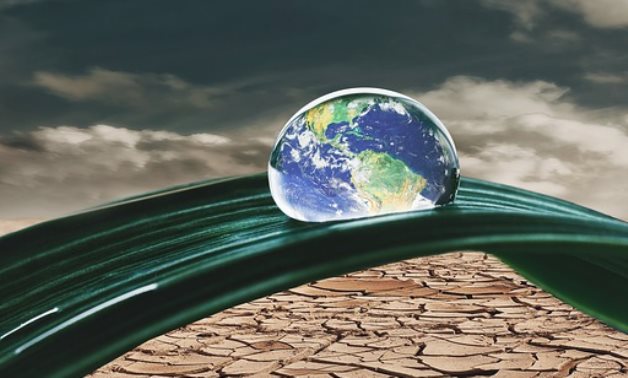
Abstract composition in which I represent climate change, in which the planet is only protected by a small dome of water- CC via Pixabay/ ELG21
CAIRO - 25 April 2024: Europe grapples with environmental crises due to climate change, resulting in losses exceeding €13.4 billion over a year. The report, compiled by the European Copernicus Climate Change Service and the World Meteorological Organization (WMO) of the United Nations, estimates that 81% of these losses stem from floods, with over 150 fatalities.
UN Official Urges Collective Action
The Secretary-General of the World Meteorological Organization, Celeste Saulo, identifies climate crisis as our generation's greatest challenge. She emphasizes the need to leverage scientific knowledge for community-centric solutions.
Europe's Alarming Climate Trends
Europe faces alarming climate trends, with temperatures rising at double the global average. The year 2023 marked unprecedented warmth, with temperatures exceeding the monthly average for 11 months, including record-breaking heat in September.
Heat-Related Deaths Surge
Heatwaves in 2023 led to a record number of heat-related deaths, with a 30% increase over the past two decades. The report highlights a 94% rise in heat-related fatalities across Europe, reflecting the dire consequences of rising temperatures.
Europe's Vulnerability to Climate Change
Europe experiences accelerated warming, with temperatures doubling the global average since the 1980s. The continent's significant landmass in the Arctic region contributes to this rapid warming, with the area witnessing a 3°C increase since the 1970s.
Billionaire Losses
The European Commission has already warned of a potential €2.4 billion decline in the EU's GDP between 2031 and 2050 if global warming surpasses the 1.5-degree threshold outlined in the Paris Agreement.
A conservative estimate suggests that worsening climate impacts could lead to a 7% reduction in the EU's GDP by the end of the century, according to the Executive Commission's communication on climate risk management.
This document also highlighted the risks posed by floods in the coming decades, estimating that annual flood damage in Europe from coastal flooding could exceed €1.6 billion by 2100, with 3.9 million people facing these disasters annually.
Based on these projections, Brussels has called for action at all levels across four key areas of work and urged member states to implement existing policies and update their national energy and climate plans, which are due in June.
Europe's Unique Vulnerability
Europe is generally located at relatively high latitudes in the Northern Hemisphere. Additionally, a portion of the continent comprises Arctic territory.
"Since the poles are the fastest-warming regions on the planet, when you average the temperatures across Europe, which includes part of the Arctic, the result is that temperatures rise more," explains Joaquín Muñoz, responsible for climate monitoring at the European Space Agency.
Another contributing factor is the changes in atmospheric circulation, which favor the occurrence of more frequent heatwaves in summer. This ocean circulation brings warm waters to European coasts, making them relatively warmer than those in other oceans.
"We have relatively mild winters when compared to how much colder winters are at equivalent latitudes in North America," he says.
Comments
Leave a Comment